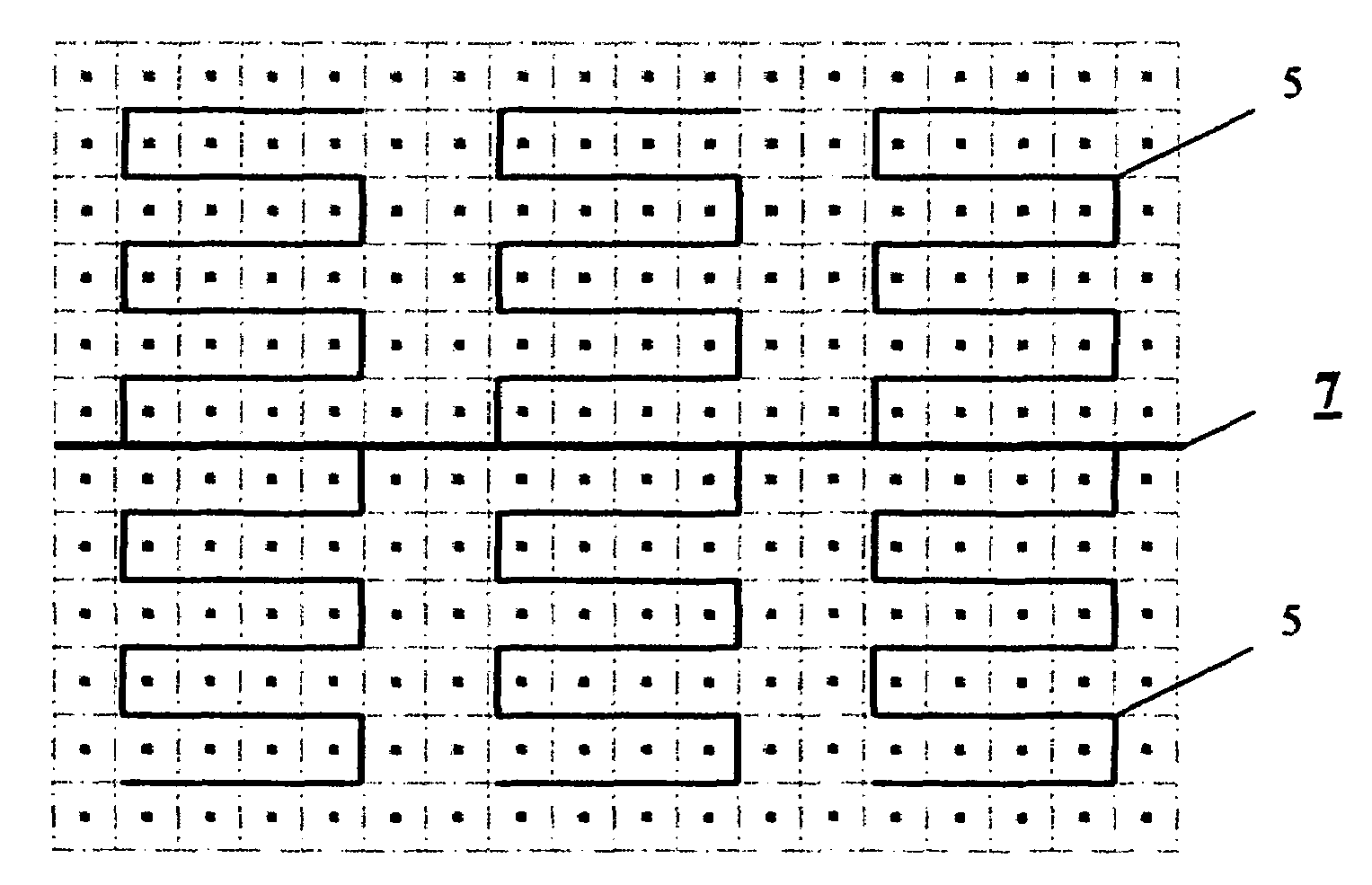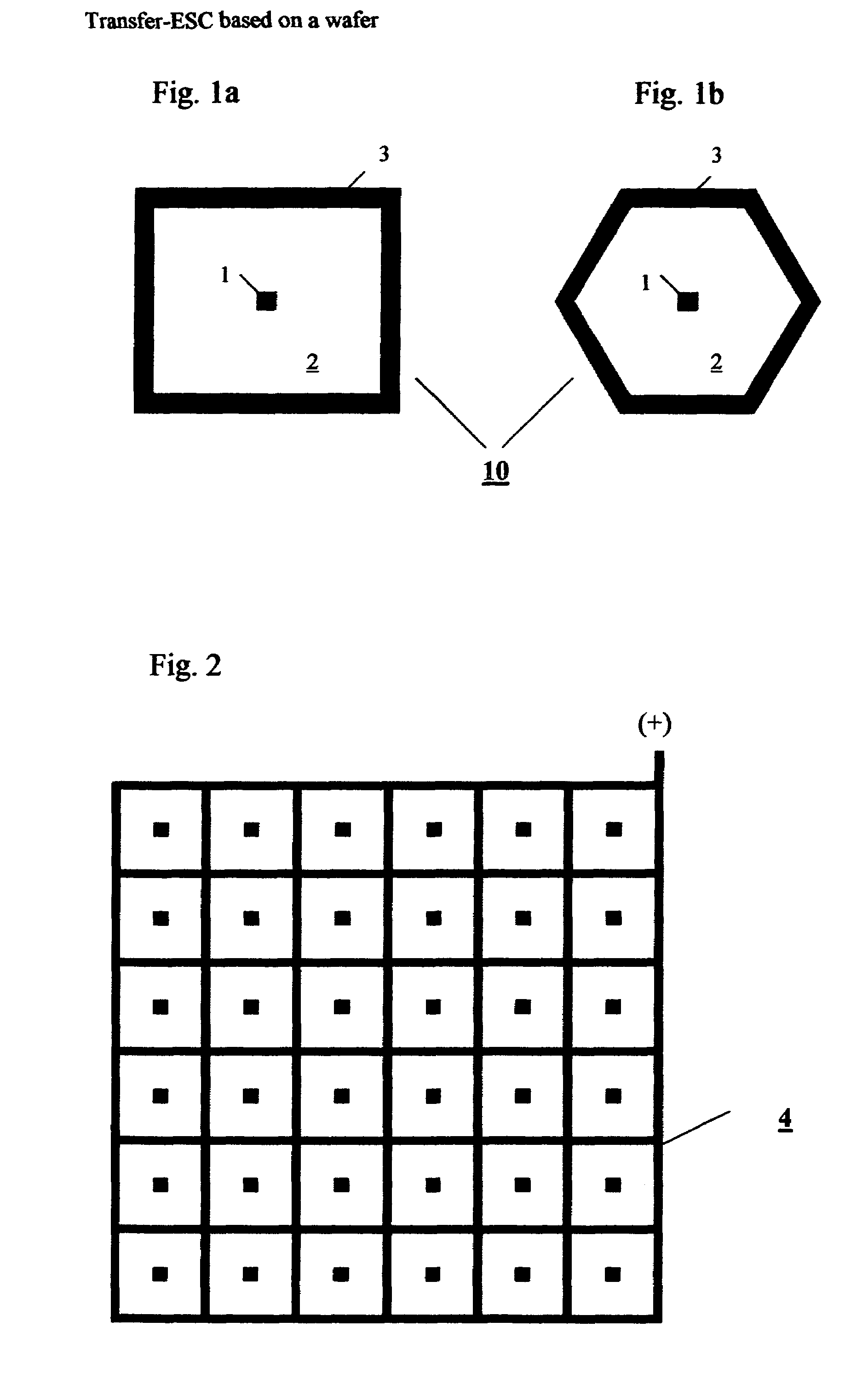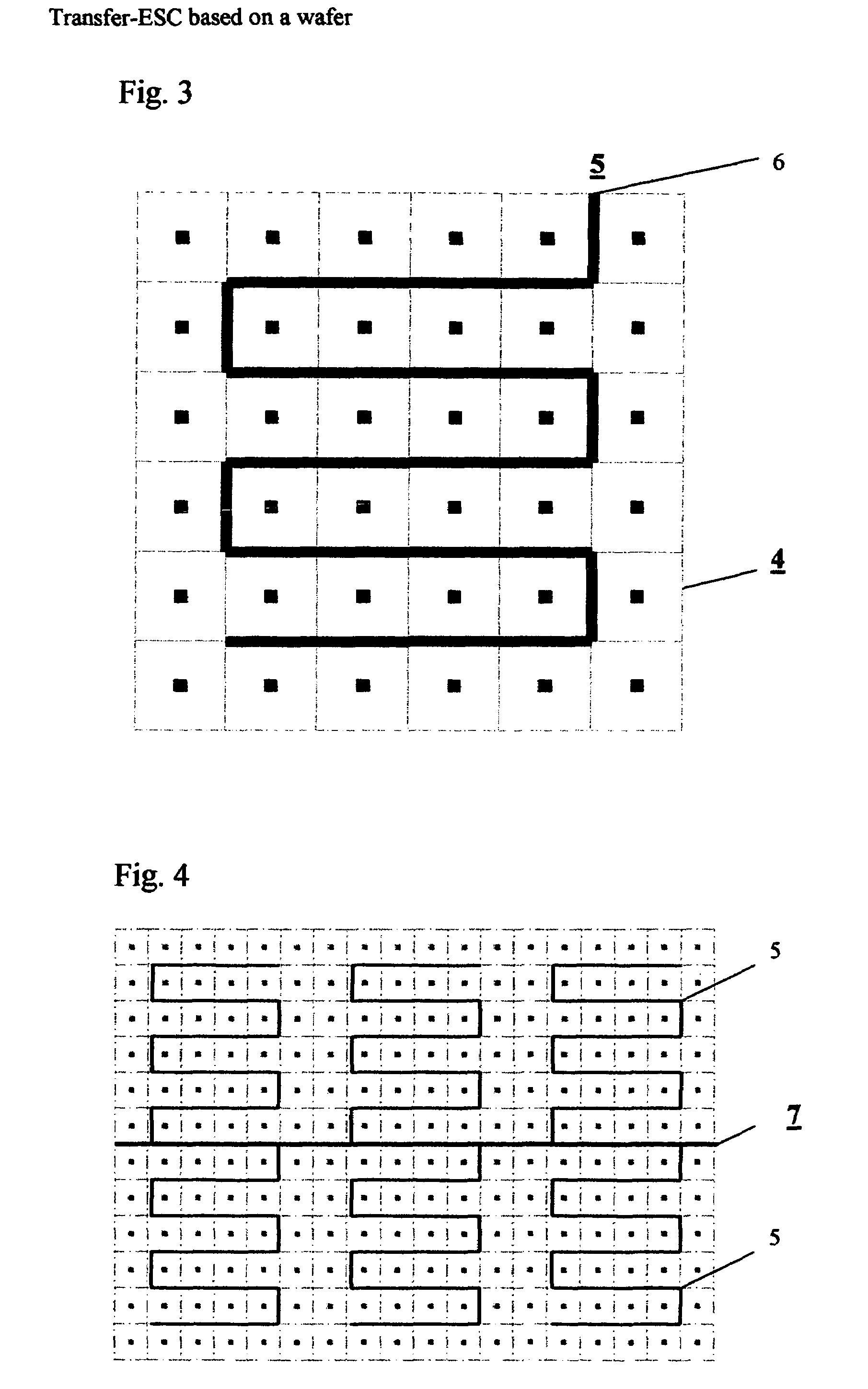Transfer-ESC based on a wafer
a technology of transfer-esc and wafers, applied in the direction of electric switches, tumbler/rocker switches, electric switches, etc., can solve the problems of brittleness, sensible wafers, and foils that are not reusable, and achieve the effect of current density
- Summary
- Abstract
- Description
- Claims
- Application Information
AI Technical Summary
Benefits of technology
Problems solved by technology
Method used
Image
Examples
Embodiment Construction
[0020]FIG. 1a shows a quadratic and FIG. 1b a hexagonal shape of an electrode-unit-cell (10). It is build up with one inside peak-electrode (1), a lateral insulator layer (2), one surrounding electrode (3) and a top dielectric layer (8). The material of choice for the inside peak-electrode (1) and the surrounding electrode (3) can be electrical conducting metals like cupper, alumina or tungsten or also highly doped poly-silicon or amorphous silicon can be employed. The used materials for the dielectric layers (2,8) are typically thermal grown-, CVD- or plasma oxides, nitrides or other suitable non conductive layers or combinations of such layers. By attaching the electrode-unit-cells (10) on each other, a complete coverage of the surface, as seen in FIG. 2, is achieved. In this case a cluster (4) of 6*6 electrode-unit-cells (10) is described.
[0021]As normal for IC manufacturing technologies, many different functional levels can be allocated above each other. So an integrated fuse (5...
PUM
 Login to View More
Login to View More Abstract
Description
Claims
Application Information
 Login to View More
Login to View More - R&D
- Intellectual Property
- Life Sciences
- Materials
- Tech Scout
- Unparalleled Data Quality
- Higher Quality Content
- 60% Fewer Hallucinations
Browse by: Latest US Patents, China's latest patents, Technical Efficacy Thesaurus, Application Domain, Technology Topic, Popular Technical Reports.
© 2025 PatSnap. All rights reserved.Legal|Privacy policy|Modern Slavery Act Transparency Statement|Sitemap|About US| Contact US: help@patsnap.com



